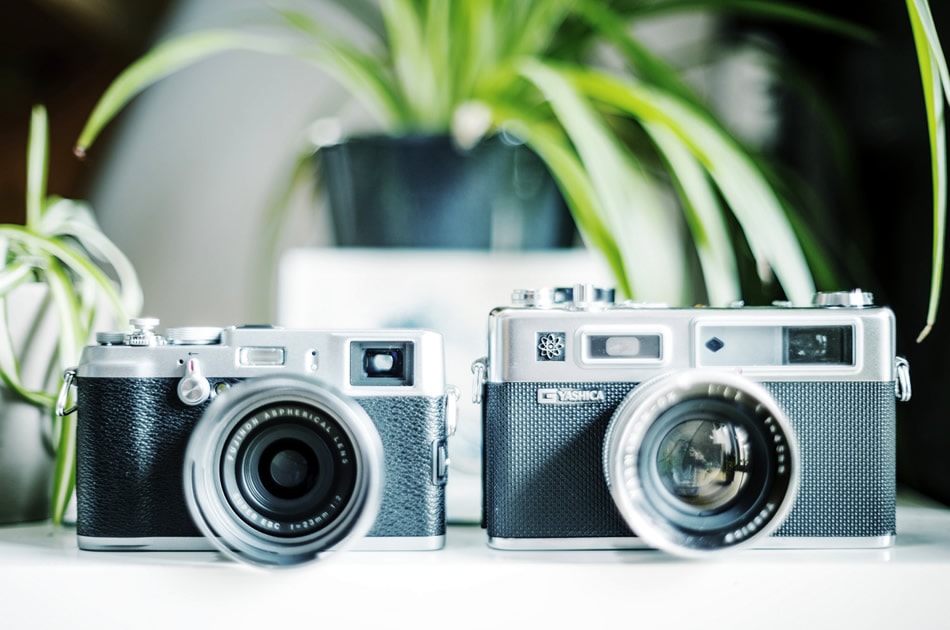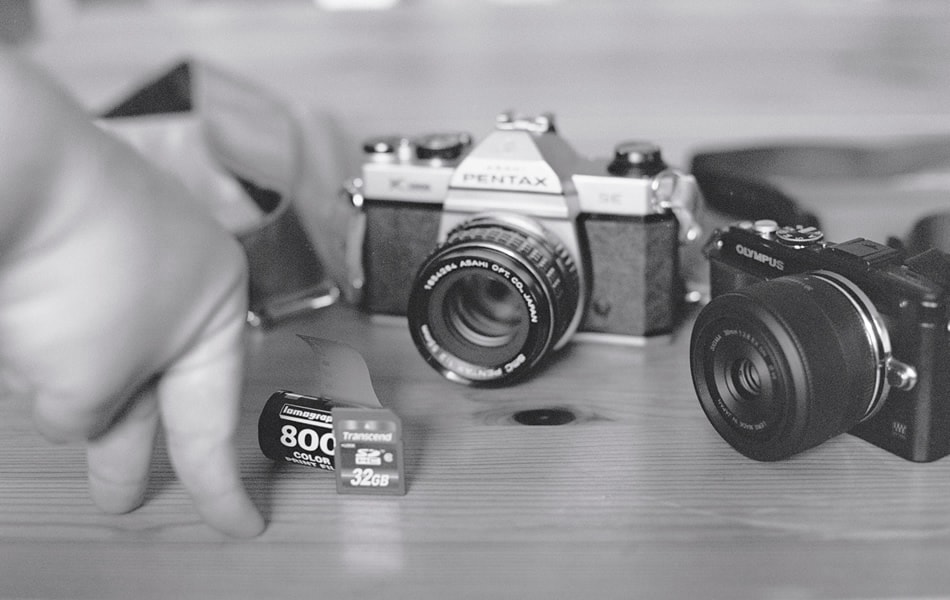The State of Digital
As an ex film photographer, I spent many years resisting ‘going digital’. I’d always primarily shot on medium format film, using Hasselblad cameras.
I’d always loved Hasselblads – they were quite rightly regarded as having the sharpest lenses in the business, and the quality they produced was hard to surpass.
The main thing about film, of course, was that it required a precise knowledge of photography in order to get the best out of it. And then the photographer needed an equally skilled lab technician to reproduce a print to the standards required to show it at its best. Digital technology, when it appeared, immediately gave everyone the chance to reproduce their photos without the obvious need for either precise knowledge or a good technician.

image by 55Laney69
Pros & Cons
When photographers talk about film, we’re rarely discussing 35mm. Film for me was medium format (120 film) or 5×4 plate cameras. And studio photographers such as myself shot on transparency film (Fuji Astia being my personal favourite). The thing about film is that it captured a broader range of colours and dynamic range than digital could.
But shooting on film in modern times has its disadvantages – by scanning in film to provide clients with digital copies quality is lost.
Still, with all this said, when I first started using DSLRs the quality and sharpness of the imagery was beyond disappointing. My first DSLR suffered from an amusing quirk called rear focus, whereby it would appear on the LCD screen to have a sharp subject and blurred background (as often required by portrait photographers). But, on viewing the images on a computer screen, focus would have been mysteriously reversed with a sharp background and blurred subject!
This, it must be said, did very little to enamour me of DSLRs!
Planned Obsolescence?
Times moved on of course, although this is one of the major issues with digital technology. DSLRs are obsolete the minute they come out of the box, because the technology is constantly improving and changing. This means that, as a pro, you generally have to accept that you’re going to be shelling out a fair amount of money fairly regularly and, back when the tech really didn’t compare favourably to film, this was a hard blow to take.
To be honest, I feared that I would never be truly happy with digital cameras. But then, finally, Canon (my DSLR brand of choice) released the 5D Mk III. And suddenly, I began to fall back in love with photography and to embrace digital in a new way. (Much as it pains me to admit it, Canon aren’t the only brand producing great DSLRs these days – but they are my favourites!)

image by Yutaka Seki
So, What Changed?
Well for me, the latest 5D finally represented a camera that could compete with film. And in some ways, it actually surpassed it. I’ve never shot with a camera that’s so capable in low light situations and has such little grain at high ISOs. In addition, it reproduces skin tones accurately, with great detail and depth. It’s a joy to use and brings fun and ease into my work.
I think that, if I’m being realistic and entirely honest, DSLRs still lack some of the tonal depth of film. And, as a particular lover of black and white imagery, I still feel that digital just can’t compete with the choices of b&w film that we used to have access to. Film had a quality that needed skill, time and patience to bring out. Digital is obviously far more immediately accessible.
For a long time, I think I was put off by digital because of the fact that it appeared to take little skill to produce an image – or at least that’s what the general public assumed. Because digital is available to everyone, clients often quibbled about paying for photo shoots, presuming that they could just as easily take the shots themselves. Fortunately for pros, it’s not as easy as it seems!
Digital has its own challenges and to get the best out of it still requires skill and abilities. DSLRs are sensitive beasts and can be far less forgiving than film if you get things wrong.
More Accessibility
Photography is a very different profession these days and the accessibility of digital, alongside the ease of post production has created a need for a different set of skills. Maybe, for an old school girl such as myself, it’s a combination of DSLR technology finally catching up and time needed to adjust to an alternative way of working. And I’ve also got back a lot of the love for photography with my latest DSLRs, which surely is the main reason we keep shooting.
